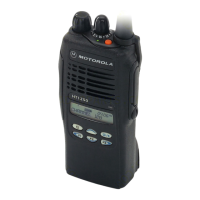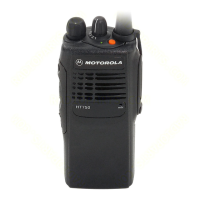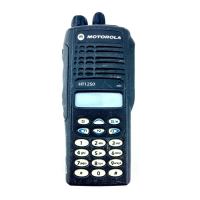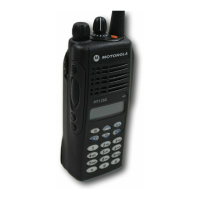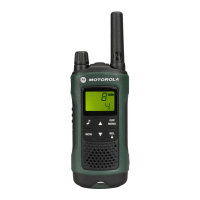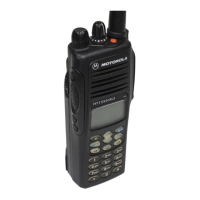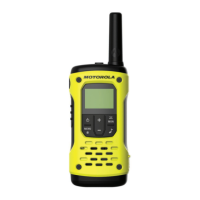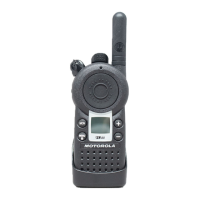7-8 Low Band, 800 MHz, PassPort & 900 MHz Theory of Operation: 800 MHz Transmitter
This RF driver IC is capable of supplying an output power of 0.3 W (pin 13 and 14) with an input
signal of 2.5 mW (4 dBm) (pin16). The current drain would typically be 200 mA while operating in the
frequency range of 806-870 MHz.
The 85Y73 LDMOS PA is capable of supplying an output power of 4.5 W with an input signal of
0.3W. The current drain would typically be 1100mA while operating in the frequency range of 806-
870 MHz. The power out can be varied by changing the biasing voltage and the drive level from the
driver IC.
7.6.2 Antenna Switch
The antenna switch circuit consists of two PIN diodes (CR101 and CR102), a pi network (C109,
L103 and C110), and three current limiting resistors (R101, R102, R103). In the transmit mode, B+ at
PCIC (U102) pin32 will go high, applying a B+ bias to the antenna switch circuit to bias the diodes
“on”. The shunt diode (CR102) shorts out the receiver port, and the pi network, which operates as a
quarter wave transmission line, transforms the low impedance of the shunt diode to a high
impedance at the input of the harmonic filter. In the receive mode, the diodes are both off, and
hence, there exists a low attenuation path between the antenna and receiver ports.
7.6.3 Harmonic Filter
The harmonic filter consists of C104, L102, C105, C106,C107, L101 and C109. It has been
optimized for efficiency of the power amplifier. This type of filter has the advantage that it can give a
greater attenuation in the stop-band for a given ripple level. The harmonic filter insertion loss is
typically less than 1.2 dB.
7.6.4 Power Control Integrated Circuit (PCIC)
The transmitter uses the Power Control IC (PCIC), U102 to regulate the power output of the radio.
The current to the final stage of the power module is supplied through R104, which provides a
voltage proportional to the current drain. This voltage is then fed back to the Automatic Level
Control (ALC) within the PCIC to regulate the output power of the transmitter.
The PCIC has internal digital to analog converters (DACs) which provide the reference voltage of the
control loop. The reference voltage level is programmable through the SPI line of the PCIC.
There are resistors and integrators within the PCIC, and external capacitors (C126, C130 and C132)
in controlling the transmitter rising and falling time. These are necessary in reducing the power
splatter into adjacent channels.
U103 and its associated components are part of the temperature cut back circuitry. It senses the
printed circuit board temperature around the transmitter circuits and provides a DC voltage to the
PCIC. If the DC voltage produced exceeds the set threshold in the PCIC, the transmitter output
power will be reduced so as to reduce the transmitter temperature.
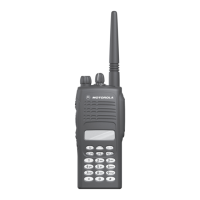
